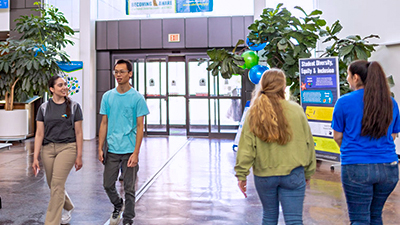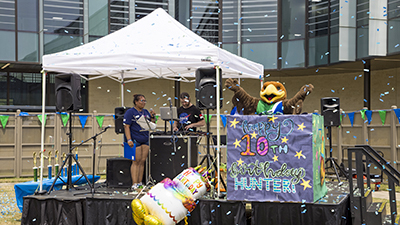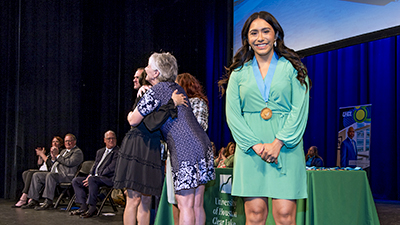Black History Month: Three great reads to honor Black authors, explore social justice issues

February is Black History Month, and for anyone looking for new ways to become more knowledgeable about the accomplishments of Black people, as well as some little-known history, University of Houston-Clear Lake’s Coordinator of the Common Reader Program, Director of the First-Year Seminar Program and Clinical Associate Professor of Humanities Anne Gessler has suggestions of four books authored by brilliant Black authors to read in February and beyond.
Gessler said that her recommendations were also finalists on the list of books considered for the university’s Common Reader selection. They are as follows:
“Take My Hand,” by Dolen Perkins-Valdez. The New York Times-bestselling author of “Wench” and “Balm: A Novel” wrote this piece of historical fiction to highlight an actual initiative that existed in 1970s Alabama in which impoverished Blacks were forcibly sterilized. The story’s main character, a nurse named Civil Townsend, begins to work in a clinic in Montgomery and through her relationship with two of her young patients, learns that women and young children are being sterilized without their knowledge or consent. The story is inspired by a national court case that occurred as a result of the nurse’s whistleblowing. It spotlights a shameful moment in American history, while emphasizing messages of hope, resilience and rebuilding.
“The Deafblind Woman Who Conquered Harvard Law,” by Haben Girma is the story of a woman born in the U.S. of Eritrean immigrant parents. Slowly, she lost her vision and hearing, and throughout her life, learned to adapt to her disabilities. The story follows her back to Eritrea and other countries in Africa, ultimately gaining admission to Harvard Law School after graduating from Lewis and Clark College in Portland, Oregon.
While at Lewis and Clark, Girma, a vegetarian, fought and won a battle with the cafeteria manager, who refused to provide a cafeteria menu to her in a way that she could access it.
The lack of accessibility to something so simple as a lunch menu had a massive impact on Girma’s life, and after invoking her rights under the Americans with Disabilities Act, she was finally able to eat the food she wanted instead of tolerating whatever she was given. The cafeteria management also learned a valuable lesson about respecting the rights of disabled people. Girma learned that when she advocated for her own rights, she benefited others as well, and it set her path towards becoming a disability rights advocate.
Gessler said the story illustrates concrete ways in which students can learn to advocate for themselves and highlights the good that comes from civic engagement and advocacy.
“The Pretty One: On Life, Pop Culture, Disability, and Other Reasons to Fall in Love with Me,” by Keah Brown was born of a tweet in which Brown, who was born with cerebral palsy, created the hashtag, #disabledandcute.
The book is a collection of essays that offer her insights about the ways in which media perpetuates stereotypes about people with disabilities. In a chapter focusing on how simple things like chairs with more supportive benches can impact people with mobility issues, Brown talks about her need to rest her body, and the assumption that people can only be productive if they’re moving and able-bodied.
She discusses the portrayal of disabled people in films and on TV, being the only disabled person in her family, and the emotional struggle of being the identical twin of an able-bodied sister.
All books are available in the Alfred R. Neumann Library at UHCL. For more information about UHCL’s Common Reader program, go online.







